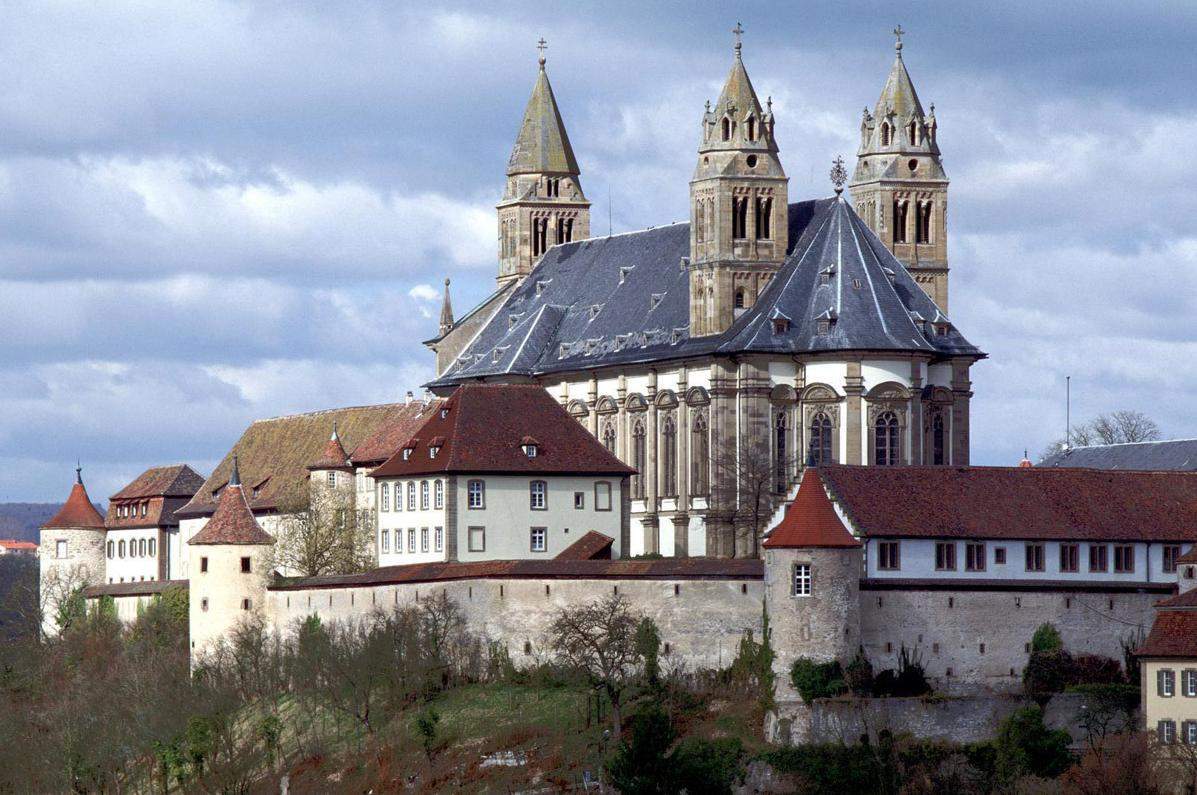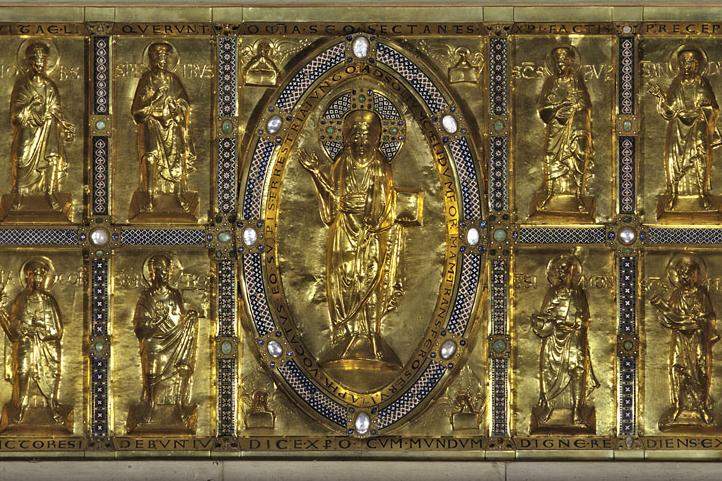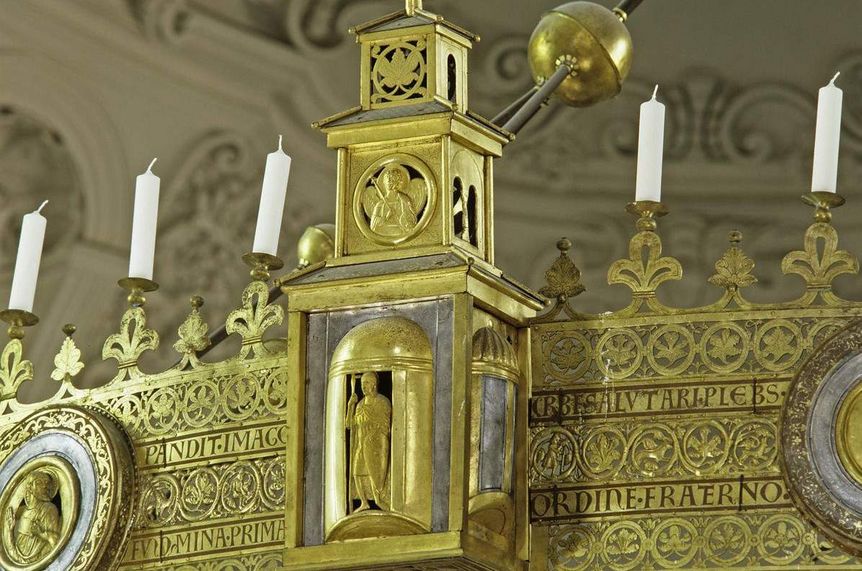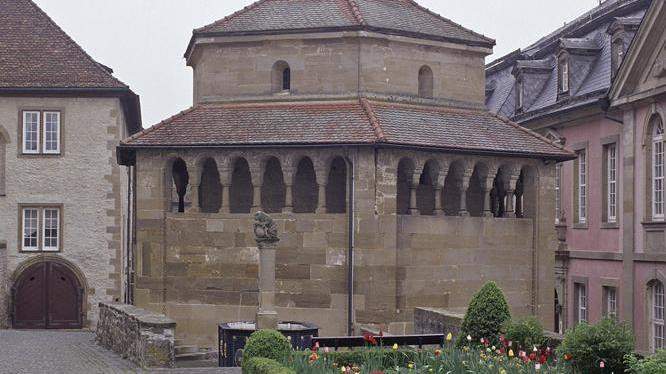Breath-taking-views – over Kleincomburg convent and more
The Stiftskirche St. Nikolaus (Collegiate Church of St Nicholas) was built in the Romanesque period – reflected, for example, in its three tall towers. The nave, flooded with natural light, was modified between 1706 and 1715 during the Baroque era, by the Würzburg architect Joseph Greising. The 500-metre-long curtain wall with its covered chemin-de-ronde offers exceptional views; and its towers and turrets bear witness to the military importance of the structure in years gone by.
From in front of the Stiftskirche St. Nikolaus, and from the cheminderonde, visitors can look across to Kleincomburg Convent, on the crest of the hill. Founded in 1108, it served as a priory for Grosscomburg Monastery. The Romanesque basilica is extremely well preserved; it is one of Baden-Württemberg’s most spectacular sacred buildings. In 1882, careful additions were made to fragments of wall decorations dating back to the Romanesque period, giving visitors a vivid impression of the original artwork.






